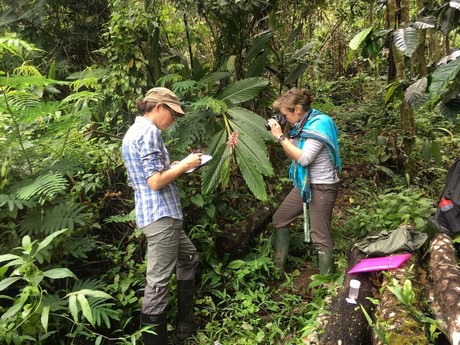Gingers, begonias and one miniscule moss are in the line-up of plant species described as new to science by experts at the Royal Botanic Garden Edinburgh (RBGE) over the last 12 months. Working around the globe, botanists have been cultivating specimens within specialist research facilities back home in Scotland – and extracting data from preserved Herbarium specimens – and they have formally recognised and described 65 new species of plants.

In the week the Garden was announced as one of the first Botanic Gardens Conservation International (BGCI) Accredited Advanced Conservation Practitioners, RBGE is collating a list of new species from its last year of research from Indonesia, Madagascar, Vietnam, the Philippines, India, Democratic Republic of Congo, Nigeria, Thailand, Brazil, Colombia and Peru. Many of these have been grown-on for months and often years in Edinburgh before being formally named.
Among the latest highlights are 12 species of Amomum – from Zingiberaceae, the ginger family; 11 Cyrtandra, part of Gesneriaceae, the African Violet family; five species of Garcinia, mangosteens; and a whopping 19 species of Begonia: with news that RBGE’s scientists and horticulturists are awaiting confirmation on other recent collections from Borneo and Peru growing in the Glasshouses, many of which are almost certainly new to science.
Closer to home, a new native moss species Weissia wilsonii was found in Cornwall and grows to just 5mm tall. It is known from a very few sites in England and Wales and RBGE research tells us this tiny discovery has undergone a long-term decline in distribution: it has been caught just in time.
Dr Mark Hughes, a Tropical Diversity scientist, explained why Edinburgh was particularly significant in the identification of new species: “We have a Living Collection containing some of the world’s rarest plants, many of which arrive here unidentified and, hence, potentially new to science.
“Our job is to make sure all the parts of the jigsaw which makes up our green planet get the recognition and protection they deserve, which means formally identifying them as new to science and, also, ensuring each gets a conservation assessment according to IUCN (International Union for Conservation of Nature) guidelines. About 25 per cent of the species we described in the last year are threatened to some degree. Naming and assessing them is just the first step, we need to make sure these species have a secure future in their native habitat and we do this by working with botanists in the relevant countries.”
The data also highlights the global significance of the Royal Botanic Garden Edinburgh’s Glasshouses and Plant Health facilities at the point where it is embarking on the £70m Edinburgh Biomes initiative to protect its unique and world-leading plant collection.
Why this data is significant in global terms was encapsulated by the research institute’s Regius Keeper, Simon Milne MBE, summing-up: “All known life depends on plants and fungi and plants are central to solving so many societal challenges such as climate change, food security and health and wellbeing. The need for Royal Botanic Garden Edinburgh expertise and that of our partners around the globe has never been greater as we unlock the secrets of Earth’s green capital.”
For more information: Royal Botanic Garden Edinburgh
Royal Botanic Garden Edinburgh
www.rbge.org.uk
